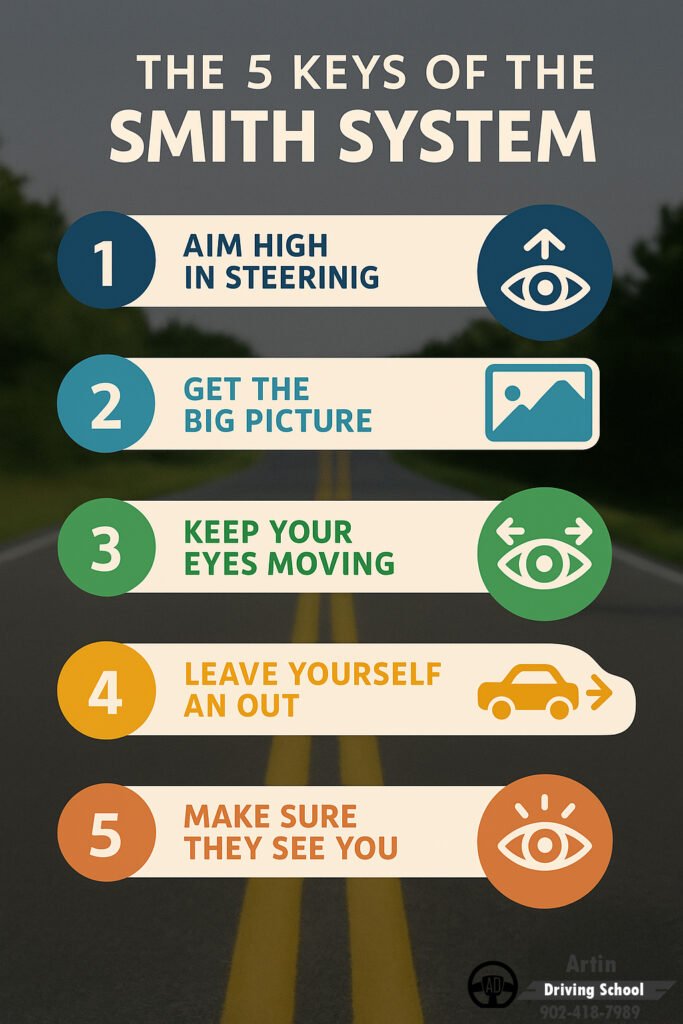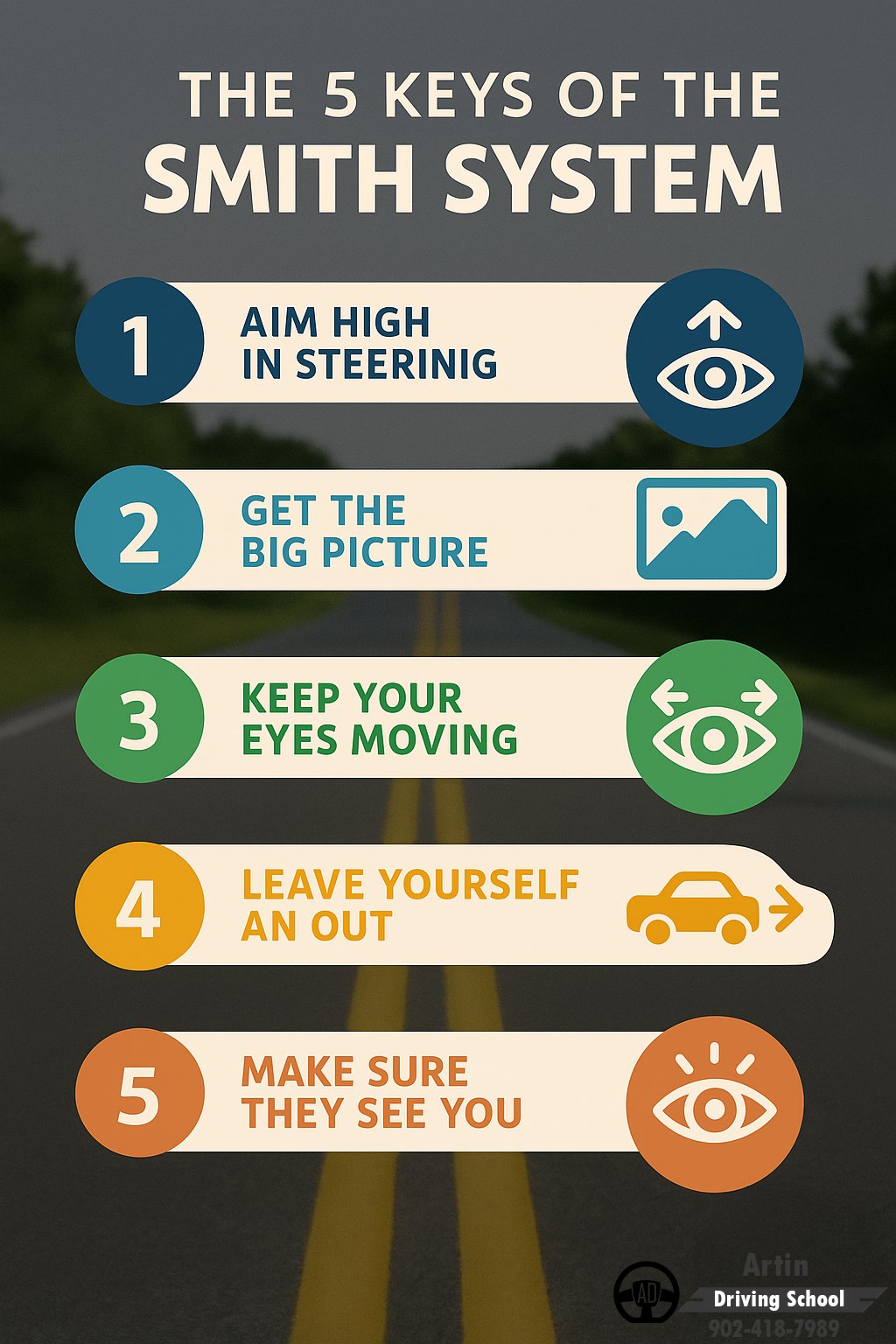How to Use the Smith System for Safer Driving in Halifax and Beyond
Staying safe on the road isn’t just about being cautious — it’s about being strategic. The Smith System driving method is a structured approach to safer driving that helps reduce collisions, increase awareness, and promote defensive driving habits. Whether you’re driving through downtown Halifax or heading out on Nova Scotia’s rural roads, this system can make a noticeable difference.
Table of Contents
- What Is the Smith System?
- Why the Smith System Driving Approach Works in Nova Scotia
- 1. Aim High in Steering
- 2. Get the Big Picture
- 3. Keep Your Eyes Moving
- 4. Leave Yourself an Out
- 5. Make Sure They See You
- Learn More About Smith System Driving
- Final Thought
What Is the Smith System?
The Smith System is a driving technique developed in the 1950s to reduce risk and improve road safety. It focuses on five habits that, when practiced consistently, help drivers avoid accidents and become more aware behind the wheel. It’s widely used in commercial fleet training but is just as effective for everyday drivers in Nova Scotia.
Why the Smith System Driving Approach Works in Nova Scotia
Nova Scotia’s driving conditions can shift quickly — from tight Halifax intersections to foggy highways outside Truro. The Smith System driving strategy prepares you to expect the unexpected by helping you stay alert and in control, even in unpredictable conditions.
This makes it a valuable foundation for defensive driving. If you’re looking to go deeper, our Defensive Driving Course covers these principles in more detail.
1. Aim High in Steering
Always look 12–15 seconds ahead, not just at the car in front of you. This gives you time to react to obstacles, traffic flow, or road hazards. It’s one of the easiest Smith System driving habits to adopt, and it works equally well in stop-and-go Halifax traffic or at highway speeds.
2. Get the Big Picture
Understanding your full surroundings — including side traffic, crosswalks, and blind spots — is key to good driving. This technique supports everything from smooth merging to safe lane changes. Make a habit of checking mirrors and scanning far and wide to catch what others miss.
3. Keep Your Eyes Moving
This Smith System driving habit keeps you engaged. Quick glances at mirrors, side streets, and rear traffic reduce fatigue and improve reaction time. It’s also effective at avoiding tunnel vision during long drives or daily commutes.
4. Leave Yourself an Out
Always keep space between your vehicle and others. This gives you room to maneuver if the unexpected happens. Whether you’re on a rural road with limited shoulders or downtown where lanes are tight, this principle is one of the most protective techniques in the Smith System.
We dive deeper into this strategy in our Nova Scotia-based defensive driving course, with examples drawn from real local traffic scenarios.
5. Make Sure They See You
Use signals early, tap the brakes to alert drivers behind you, and make eye contact when possible — especially with pedestrians. In Halifax’s dense city traffic or in foggy rural zones, being visible is as important as being aware. This rule of Smith System driving is often overlooked but incredibly effective.
Learn More About Smith System Driving
These five rules aren’t just theory — they’re habits that build safer, more confident drivers. If you want to fully master Smith System driving techniques, they’re a core part of what we teach in our defensive driving program.
Final Thought

Smith System driving gives you structure. It’s a practical framework that helps drivers stay focused, reduce risk, and handle traffic situations with confidence. Whether you’re behind the wheel in Halifax or on a quiet backroad, these five simple principles can help you drive smarter — and safer — every day.
Want more insights like this? The Transport Canada Road Safety page also offers valuable information on safe driving habits and national guidelines.
The information provided on this post is for general informational purposes only and is not intended to serve as professional advice or guidance. While Artin Driving School strives to ensure the accuracy and timeliness of the information shared, Artin Driving School makes no guarantees, warranties, or representations regarding the completeness, reliability, or suitability of any content posted.





